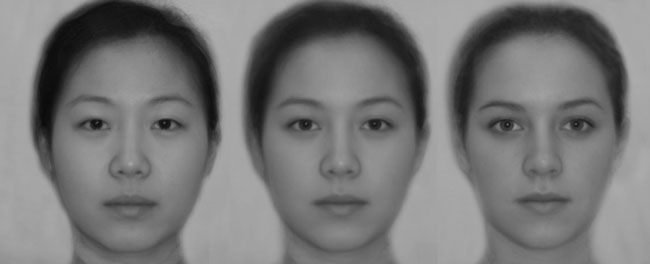
New light has been shed on the brain processes involved in judging multi-racial individuals thanks to a collaborative research project between the University of Otago and the University of California, San Diego.
Professor Jamin Halberstadt, from Otago's Department of Psychology, and his colleague Professor Piotr Winkielman, from UC San Diego, say their studies used blended faces made up from two individuals, one Chinese and one Caucasian.
"Previous research has shown that blended faces, regardless of race, are usually more attractive than the original faces that go into the blend,” Halberstadt explains.
"This blending effect is especially evident for cross-race blends, so if you take two people of different races and blend them together then you get a face that is more attractive than the originals, but that blend is also more attractive than a blend of two faces from the same race."
"Our idea was that these effects might be explainable by 'processing fluency' - how easy it is to perceive, process, and categorise something. Blended faces are 'easier on the eyes,' because they are very 'face-like', and this ease creates a positive feeling toward them."
The problem comes when racial face blends are not seen as 'human faces' but rather as examples of their racial groups. In that case, they should seem relatively ambiguous, and that ambiguity should translate into negative attitudes.
Halberstadt and Winkielman say their most recently published research, in the Journal of Experimental Social Psychology, asked participants to first categorise a person's racial group and then judge their attractiveness. They compared the judgments to those of control participants who simply rated the facial blends on their attractiveness without classifying them.
They found that control participants preferred mixed-race faces to single-race faces, but participants who had to first decide if a face was Chinese or Caucasian, judged the mixed race faces to be relatively unattractive.
In a parallel experiment they used electromyography (EMG) to measure facial expressions and found that people were less inclined to smile at the faces presented to them if they had to categorise them first.
Professor Halberstadt says it appears that a blend is attractive as long as you do not have to think about where it came from.
"It comes back to fluency - how easy things are to process in your mind," he says. "When you think of multi-racial individuals as examples of humans they are more appealing because they better capture your overall experience of life. But when you think of them as examples of their racial groups then they become more ambiguous and that ambiguity pulls down their appeal."
